What is this? What is it measuring?
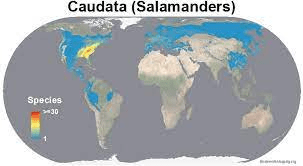
Heatmap and species richness of salamanders
What is species richness?
How many total species there are
What is this?
A food web
What are the 3 main types of ecosystem interactions? (Big labels)
Competition
Predator/prey
Symbiosis
Where in the world has the most diversity of salamanders? How many continents do salamanders live?
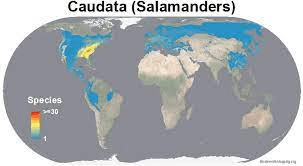
Tennessee (red area) slightly inland southeastern usa
4 continents have salamanders NA, SA, EU, AS
What is evenness?
How the different species in an area are distributed (how many of the different species)
What do the arrows show and are they pointing the right way?
The movement (or flow) of energy
No ... no they are not they need to point toward the organism that is doing the eating
What are the three different types of symbiosis (names only)
Mutualism
Commensalism
Parasitism
In this image identify the quadrat and the transect

Square is quadrat, line is transect
The two types of indices (plural for index) we discussed in class were what?
Simpson's and Shannon's
Use this food web to create a food chain of at least 4 trophic levels
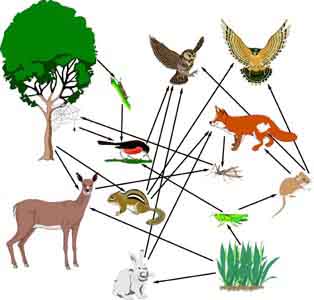
Answers will vary but here are some that students may say
Grass -> Grasshopper -> mouse -> (fox, owl, hawk)
Tree -> Caterpillar -> bird -> owl
Tree -> deer -> mosquito -> spider
For each of the symbiosis types say what they are and give the signs on who wins/loses
Mutualism (+,+)
Commensalism (+,0)
Parasitism (+,-)
Explain how quadrats and transects are used

A quadrat with a known area is placed at regular intervals along a transect and the organisms within the quadrat are recorded
Simpson's Index ranges from what two numbers?
Which end represents higher diversity?
0-1
Closer to 1 = higher diversity
Name a producer in this food web

Grass or tree
What are the two types of competition?
Intraspecific & Interspecific
Why would you use the quadrat and transect method instead of just randomly sampling an area with quadrats and not using a transect?

Transect is to see how species composition changes or does not change over a linear distance
Randomly sampling with quadrats is to estimate population size or percent cover of an area
Looking at the following formula for Simpson's Diversity Index. What does "n" mean?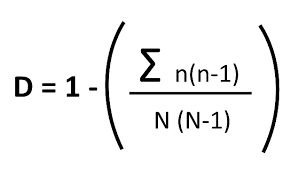
The number of a particular species found in that area
Create an energy pyramid and make it 5 trophic levels. Give me a realistic example in each level.
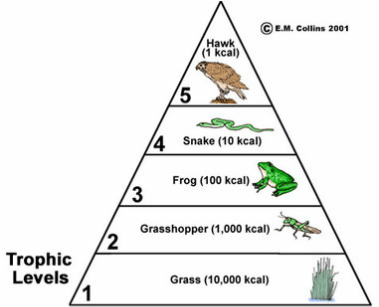
The pom pom crab uses two anemones to fight would be predators. The anemones get better access to food. This is an example of _____ because _____ 
Mutualism both the anemones and the crab both benefit
Using the formula for Simpson's Diversity Index what does "N" mean?
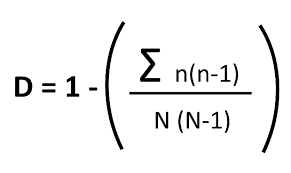
Total number of organisms in an area
How much energy is lost as you go up 1 trophic level? and how much goes up to the next level
90% is lost
10% goes up to the next level
False cleaner fish mimic the coloration and pattern of cleaner fish (which clean parasites off of larger fish and get a free meal, while cleaning larger fish of parasites). Instead the false cleaner fish takes a bite of the larger fish and swims away why?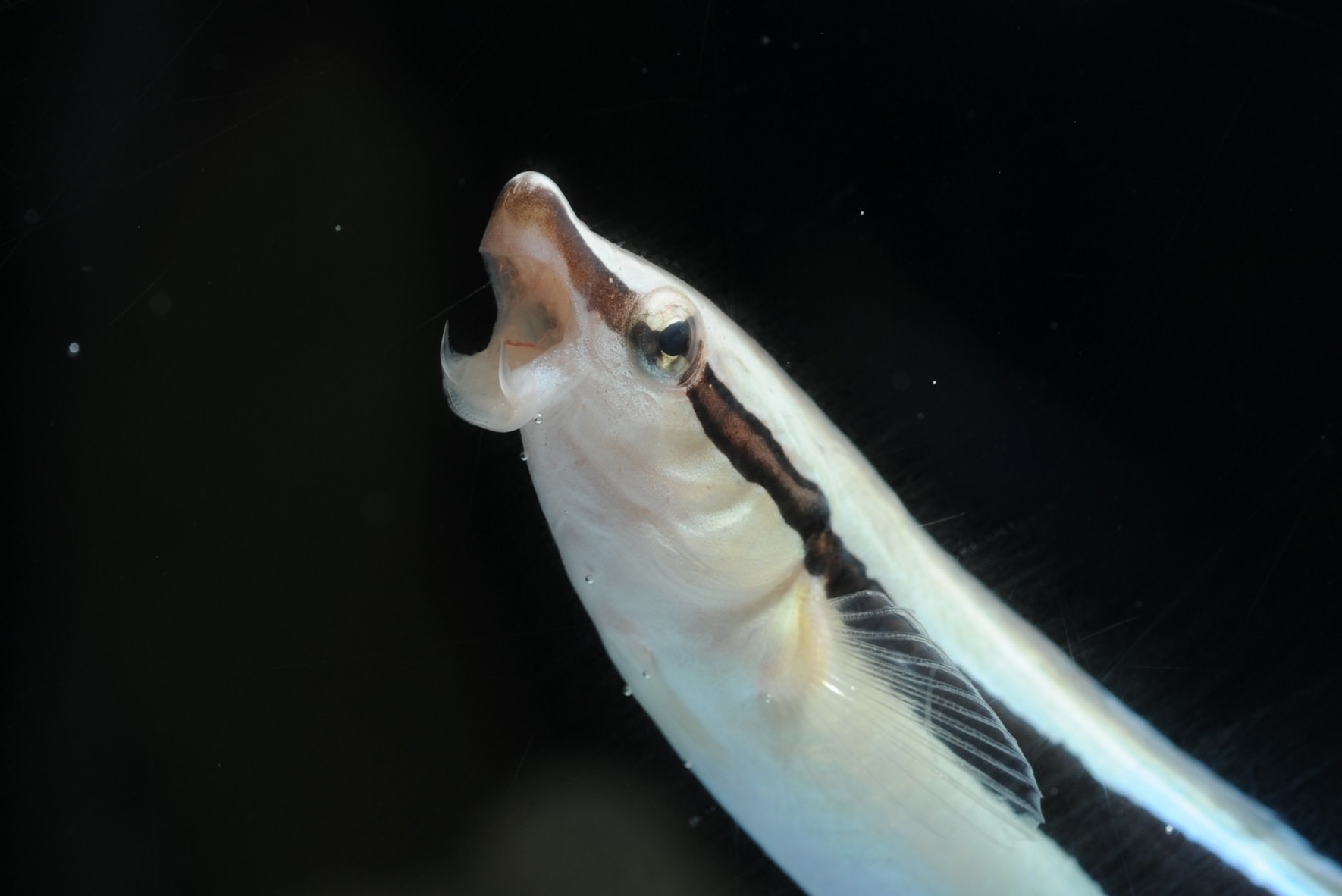
Parasitism one benefits at the others expense
What is the species richness of each of the habitats?

2, 5, 2, 5
Assuming the middle level of a 5 level trophic pyramid has 1,000 units of energy fill out the other levels with how much energy they each have
Bottom = 100,000 then 10,000 then 1,000, then 100 then 10 at the apex
This bird built a nest in a tree what relationship is this and what organisms are involved? why?

Commensalism between bird and tree
The bird benefits and the tree is neither harmed nor helped
What is the species evenness for habitat B?

Now label the 5 level trophic pyramid with all of the keywords needed
Producer, Primary consumer, etc. Apex Predator
Herbivore, Carnivore, heterotroph, autotroph
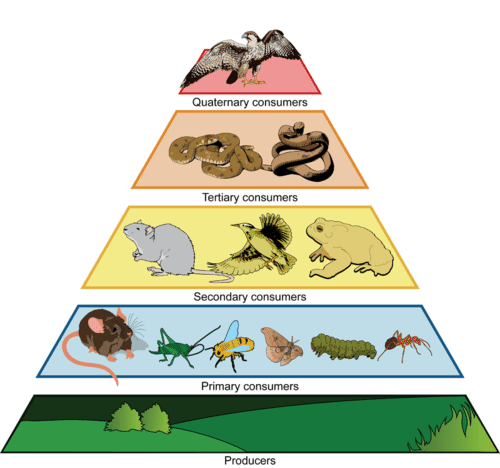
What makes something a symbiotic relationship?
They involve a long-term interaction between two or more different species where at least one organism benefits
What is the species evenness for habitat D?

How many different length food chains can you make with the eagle as the apex predator? Then calculate how much energy is in the eagle for EACH chain, once again assuming the producer has 10,000 units of energy and the 10% rule holds true.
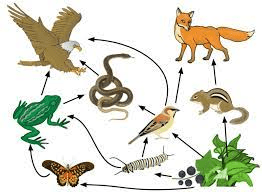
3rd trophic level = 100 units of energy
Plant->Sparrow->Eagle
4th trophic level = 10 units of energy
3 different paths
5th trophic level = 1 unit of energy
2 different paths
Which type of competition is which and what signs would you use to categorize both and why?
Intraspecific = within same species
Interspecific = across different species
Both = (-,-)
Because everyone is loses during competition
In proper CER format and WITHOUT ANY MATH which of the habitats would have the lowest diversity?

Claim: Habitat A has the lowest diversity
Evidence: Habitat A only has 2 species, Habitat A is mostly comprised of 1 species (9 red and only 1 blue), Habitat C also has two species, but 5 of each and habitats B and D have 5 different species
Reasoning: Habitat A has the lowest diversity BECAUSE there are only 2 species present and most of those are the same species (9 red and only 1 blue) in comparison with the other habitats which either have a higher species richness and/or are more evenly distributed
What could happen to the community if foxes suddenly vanished? This would be a _______ (4 words)
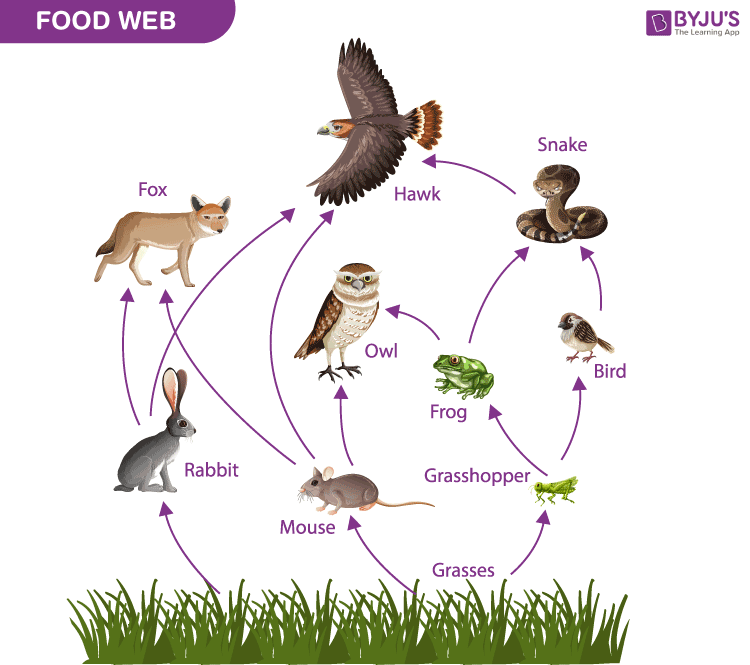
Mice and rabbits would increase
This would cause a decrease in grass
This would then ripple back up the food web causing everything else to decrease
Top down trophic cascade